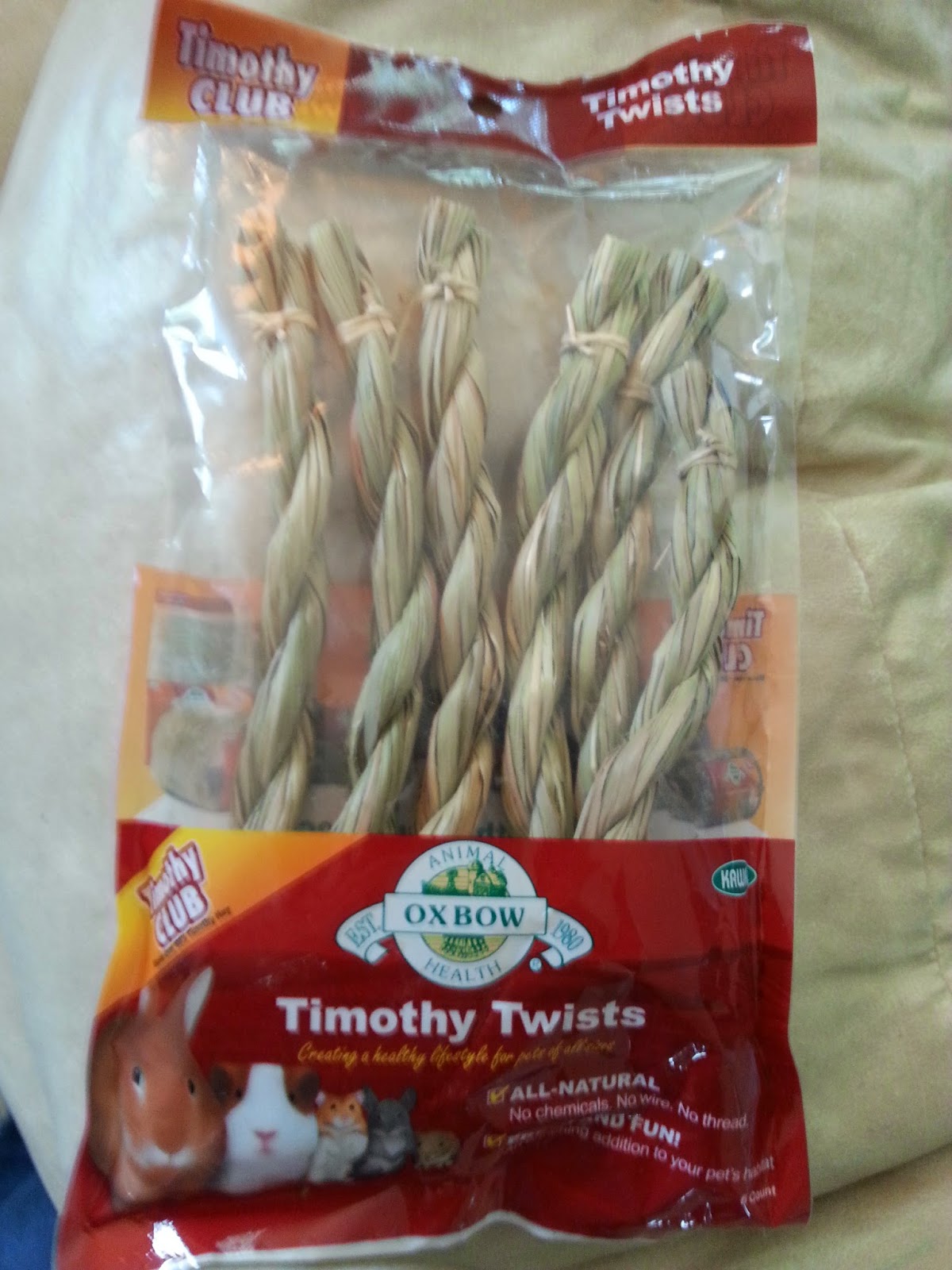The other day, the humans brought home a new food from the grocery store, and we got excited.
 |
| What is it? Can we eat it? |
 |
| Why is it just sitting in a jar? Shouldn't someone be eating it? |
 |
| Wow, it comes with instructions? |
Unfortunately, keeping your guinea pig safe from oxalic acid isn't as easy as just avoiding the delicious monster. Oxalic acid is found in many different types of food. It's also found in many household plants, which is why the humans freaked out that one time I ate a lily.
So what exactly is oxalic acid? It's a chemical substance that occurs naturally in plants, and can be toxic at high dosages. When eaten, it combines with metals in your body like magnesium and calcium to form a type of salt called oxalates. The body has no use for oxalates, and so it expels them through urine. At low dosages, this is generally not a problem. However, at higher dosages, important nutrients are trapped in oxalates, preventing your body from absorbing them. Also, oxalates crystals can be sharp, which can irritate the body and cause problems, such as kidney stones. In guinea pigs, too much oxalic acid can be fatal.
As we mentioned in our post on Guinea Pig Nutrition, guinea pigs should generally eat no more than 50 mg per day of oxalic acid. Some foods that are high in oxalic acid include:
- Beet Greens (leaves) = 610 mg per 100 grams
- Parsley = 425 mg per 25 grams
- Radishes, mild = 480 mg per 100 grams
- Spinach = 970 mg per 100 grams
- Sweet Potato = 240 mg per 100 grams


















